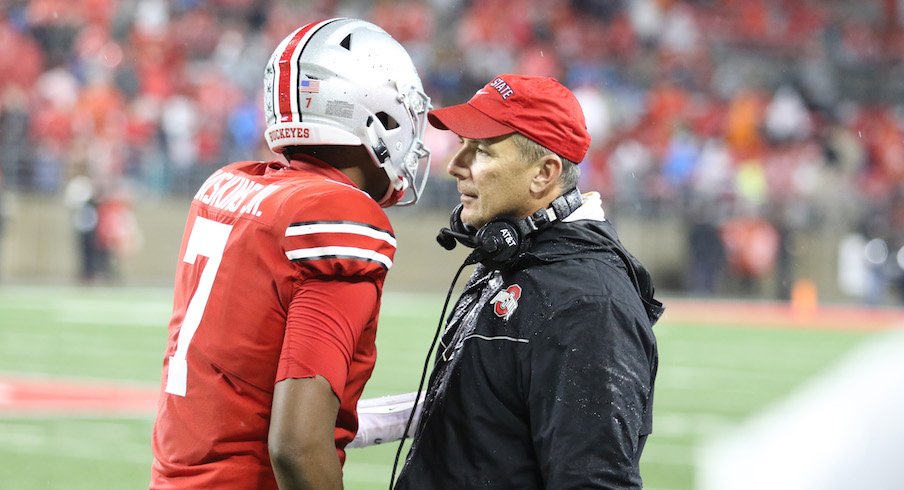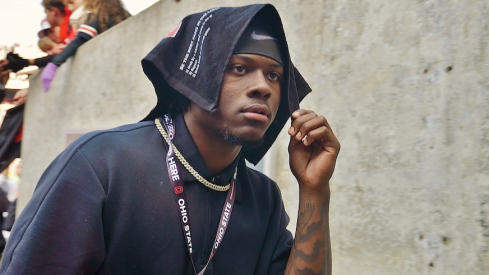The last time Ohio State's quarterback succession went according to plan, Todd Boeckman replaced Troy Smith ahead of the 2007 season.
There's no other position in football that generates quite the same intrigue as the quarterback, and for good reason. The quarterback touches the ball nearly ever offensive snap, is responsible for facilitating the offense and bears most of the burden for wins and losses – fair or not.
And with the roster turnover in college football, a team will only have the same starting quarterback a maximum of four years. Given that, it's easy to obsess over the succession plan, covet recruits, and project who will be the next starter and when he'll take the reins.
But it's nearly impossible to be totally correct in your projections.
Ohio State hasn't had a quarterback succession go as planned in over 10 years. The last time it happened, redshirt junior Todd Boeckman took over for Troy Smith after the 2006 Heisman Trophy winner graduated. Boeckman led the Buckeyes to an 11-2 record and their second-straight appearance in the BCS Championship Game.
Things haven't gone according to plan since.
The very next year, Boeckman began the season as the starter, but quickly lost his job to a true freshman Terrelle Pryor following the third game of 2008. Pryor started for three seasons – 2008-10 – before he was suspended, and ultimately left the school following the scandal that led to Jim Tressel's resignation.
Pryor's premature departure paved the way for redshirt senior Joe Bauserman, whose Ohio State playing career was as inglorious as it was short-lived. Bauserman was benched in favor of true freshman Braxton Miller after just his third game as a starter, and returned to the field just once in place of an injured Miller against Nebraska. He entered that game leading 24-13 in the third quarter; Ohio State lost 34-27.
Miller quarterbacked the Buckeyes for the next three years – missing the occasional start due to injury, in which case Kenny Guiton got the nod – until he tore his labrum during Ohio State's 40-35 loss to Clemson in the 2014 Orange Bowl.
If the past 10 years have taught us anything, it's that the backup quarterback is one of the most vital players on the roster.
Miller rehabbed his injury and was expected to start for the Buckeyes the next season, until he re-injured his shoulder less than two weeks before the season started, paving the way for redshirt freshman J.T. Barrett.
Barrett, of course, went on to have one of the most successful debut seasons in program history, breaking a number of records and finishing fifth in the Heisman voting. He led the team to an 11-1 regular-season record before breaking his ankle in the third quarter against Michigan.
Enter Cardale Jones.
In the first three starts of his career, Jones led the Buckeyes past No. 10 Wisconsin, No. 1 Alabama and No. 2 Oregon to secure the College Football Playoff national championship. This set up QBGeddon between Miller, Jones and Barrett during the offseason, which ultimately led to Jones being named the starter to start the 2015 season.
Jones started – and won – the first seven games of the season before he was ultimately benched and replaced with Barrett. Barrett was the starter the remainder of the 2015 season, and remained the starter for the next two seasons, before graduating last fall.
Now, Ohio State must replace Barrett in a planned succession – an anomaly.
The theme here is that things rarely go as planned at the quarterback position. And while it's fun as fans – and perhaps even as coaches and players – to extrapolate and project who will play when, and what the future depth chart will look like, we truly have no idea.
The reality is, we should expect the unexpected. Injuries happen, players get benched and newcomers emerge. Whatever you think the quarterback position will look like for the next four years, chances are you're wrong.
The one thing we can be sure about is that depth is important, especially at the quarterback position.
If the past 10 years have taught us anything, it's that the backup quarterback is one of the most vital players on the roster. He may not be starting now and he may not have a clear path to start anytime soon. But if history's to be believed, he'll play – and sooner than he thinks.


